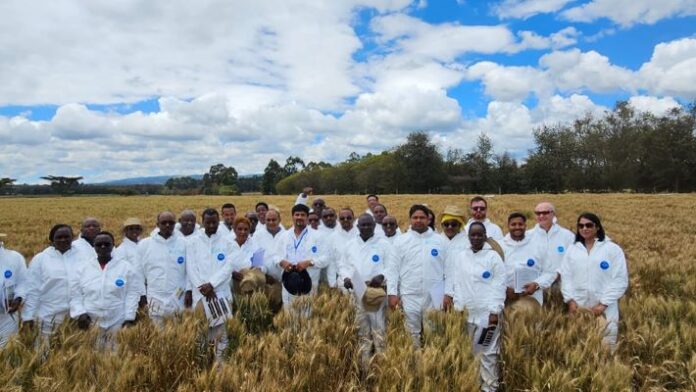The Wheat Disease Early Warning Advisory System (Wheat DEWAS) one of the world’s largest crop pathogen surveillance systems is set to expand its analytic and knowledge systems capacity to protect wheat productivity in food vulnerable areas of East Africa and South Asia.
The project funded at a tune of $7.3 million grant from the Bill & Melinda Gates Foundation and the United Kingdom’s Foreign, Commonwealth & Development Office, is to enhance crop resilience to wheat diseases.
Led by David Hodson, principal scientist at International Maize and Wheat Improvement Center (CIMMYT), and Maricelis Acevedo, research professor of global development and plant pathology at Cornell University’s College of Agriculture and Life Sciences, this initiative brings together research expertise from 23 research and academic organizations from sub-Saharan Africa, South Asia, Europe, the United States and Mexico.
Tracking pathogen strains
Wheat DEWAS aims to be an open and scalable system capable of tracking important pathogen strains. The system builds on existing capabilities developed by the research team to provide near-real-time model-based risk forecasts and resulting in accurate, timely and actionable advice to farmers.
As plant pathogens continue to evolve and threaten global food production, the system strengthens the capacity of countries to respond in a proactive manner to transboundary wheat diseases.
The system focuses on the two major fungal pathogens of wheat known as rust and blast diseases. Rust diseases, named for a rust-like appearance on infected plants, are hyper-variable and can significantly reduce crop yields when they attack. The fungus releases trillions of spores that can ride wind currents across national borders and continents and spread devastating epidemics quickly over vast areas.
Wheat blast, caused by the fungus Magnaporte oryzae Tritici, is an increasing threat to wheat production, following detection in both Bangladesh and Zambia. The fungus spreads over short distances and through the planting of infected seeds. Grains of infected plants shrivel within a week of first symptoms, providing little time for farmers to take preventative actions. Most wheat grown in the world has limited resistance to wheat blast.
“New wheat pathogen variants are constantly evolving and are spreading rapidly on a global scale,” said Hodson, principal investigator for Wheat DEWAS. “Complete crop losses in some of the most food vulnerable areas of the world are possible under favorable epidemiological conditions. Vigilance coupled with pathogen-informed breeding strategies are essential to prevent wheat disease epidemics. Improved monitoring, early warning and advisory approaches are an important component for safeguarding food supplies.”
Building scalable, integrated, and sustainable solution
Previous long-term investments in rust pathogen surveillance, modelling, and diagnostics built one of the largest operational global surveillance and monitoring system for any crop disease. The research permitted the development of functioning prototypes of advanced early warning advisory systems (EWAS) in East Africa and South Asia. Wheat DEWAS seeks to improve on that foundation to build a scalable, integrated, and sustainable solution that can provide improved advanced timely warning of vulnerability to emerging and migrating wheat diseases.
“The impact of these diseases is greatest on small-scale producers, negatively affecting livelihoods, income, and food security,” Acevedo said. “Ultimately, with this project we aim to maximize opportunities for smallholder farmers to benefit from hyper-local analytic and knowledge systems to protect wheat productivity.”
The system’s previous success
The system has already proven successful, contributing to prevention of a potential rust outbreak in Ethiopia in 2021. At that time, the early warning and global monitoring detected a new yellow rust strain with high epidemic potential. Risk mapping and real-time early forecasting identified the risk and allowed a timely and effective response by farmers and officials. That growing season ended up being a production record-breaker for Ethiopian wheat farmers.
While wheat is the major focus of the system, pathogens with similar biology and dispersal modes exist for all major crops. Discoveries made in the wheat system could provide essential infrastructure, methods for data collection and analysis to aid interventions that will be relevant to other crops.









